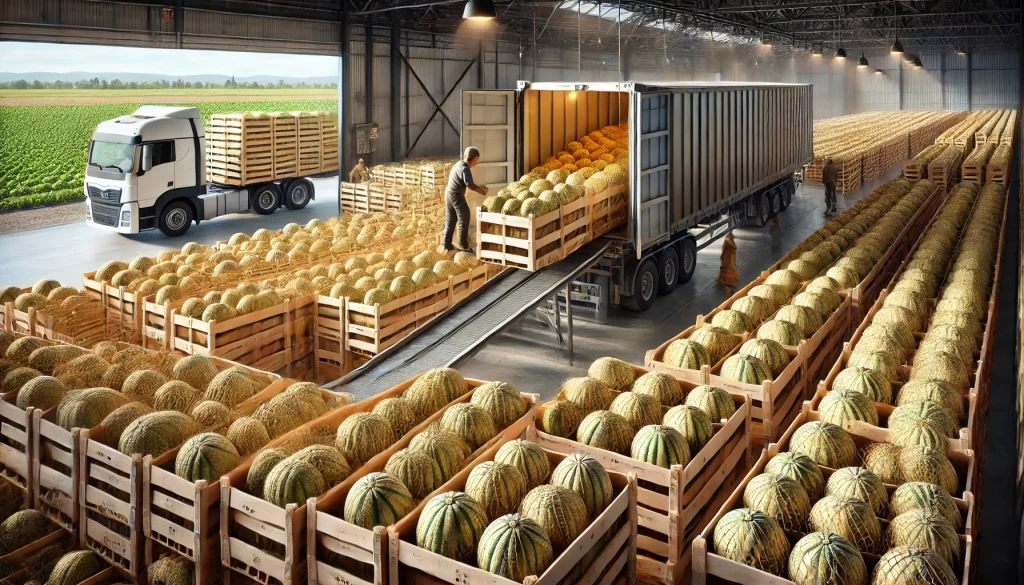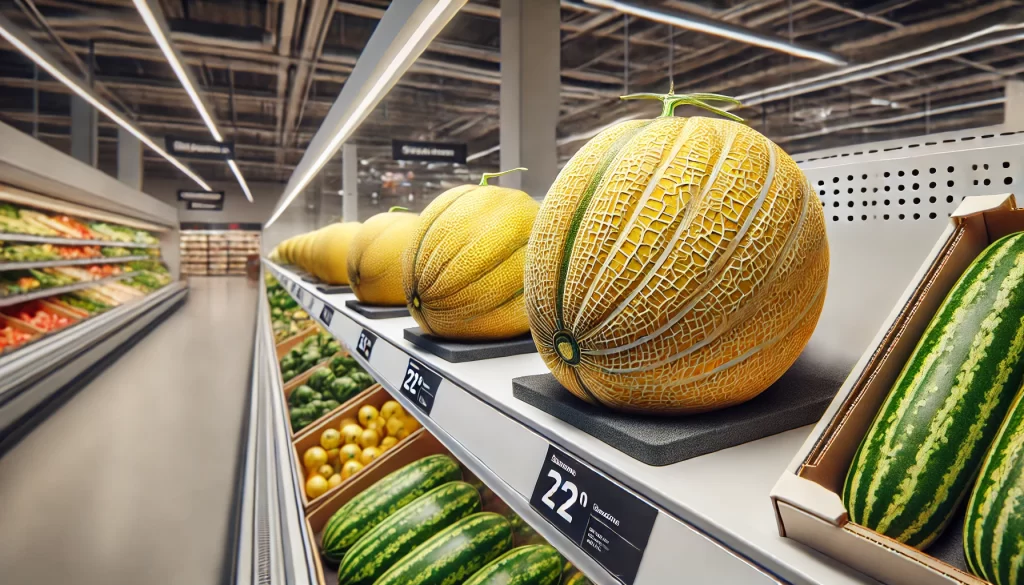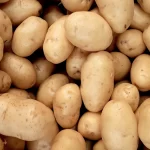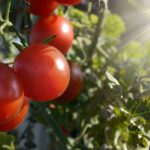The melon is a delicate fruit that requires specific care during storage and transportation to maintain its freshness, flavor, and quality. Applying appropriate techniques at each postharvest stage ensures that the product reaches the consumer in optimal conditions, reducing losses and improving profitability. Below are recommended practices for effectively storing and transporting melons.

Storage Conditions
Temperature and Humidity
Controlling temperature and humidity is crucial to preserving melon freshness:
- Ideal Temperature: Store melons at temperatures between 7°C and 10°C. This range helps slow down deterioration and prevents cold damage.
- Relative Humidity: Maintain relative humidity between 90-95% to reduce fruit dehydration and weight loss without encouraging mold growth.
Ventilation and Air Circulation
- Air Circulation: Ensure proper ventilation in storage rooms to prevent ethylene accumulation and excessive moisture, factors that accelerate ripening and deterioration.
- Packaging: Use ventilated cardboard boxes or plastic containers that allow air circulation and proper spacing between fruits to prevent mechanical damage.
Staged Storage
Melons should be stored following an uninterrupted cold chain:
- Field and Post-Harvest: Minimize the time between harvest and refrigeration. Transfer fruits to a controlled environment as soon as possible.
- In Warehouses: Use refrigerated chambers with the appropriate temperature and humidity parameters. Implement monitoring systems to detect variations and correct them promptly.
Transportation Techniques

Loading Preparation
- Fruit Selection: Inspect melons to ensure they are in good condition before transport, discarding those with damage, bruises, or signs of disease.
- Proper Packaging: Use protective materials such as kraft paper, foam, or nets to cushion impacts and prevent direct contact between fruits. Boxes should allow ventilation and withstand the load during transportation.
Temperature Control
- Refrigerated Transport: Use refrigerated trucks that maintain a consistent temperature between 7°C and 10°C. This preserves melon freshness and prevents the development of microorganisms.
- Monitoring: Use temperature and humidity loggers to track conditions during transit. Adjust refrigeration settings in case of deviations.
Routes and Handling
- Route Planning: Plan transportation routes that minimize travel time and unnecessary stops, reducing melons’ exposure to unfavorable conditions.
- Cautious Handling: Train personnel to handle boxes carefully, avoiding jerks and drops that could damage the fruit.

Practices to Extend Melon Shelf Life
- Use of Controlled Atmospheres: For long-term storage, the use of modified atmosphere packaging (MAP) with reduced oxygen and elevated carbon dioxide levels can extend melon shelf life without altering its organoleptic properties.
- Postharvest Treatments: Apply antimicrobial treatments to the fruit’s surface before storage to prevent mold and bacterial growth.
- Regular Inspection: Periodically inspect stored melons to identify and remove those showing signs of decay, preventing the spread of potential diseases.
Impact of Proper Storage and Transportation
Applying effective storage and transportation techniques:
- Improves product quality: Melons retain their flavor, texture, and nutritional properties.
- Reduces losses: Minimizes waste from deterioration and mechanical damage.
- Increases customer satisfaction: Ensures the product arrives in optimal condition, fostering customer loyalty.
- Optimizes the supply chain: Enhances logistical efficiency and reduces costs associated with returns and losses.

Conclusion
Maintaining melon freshness during storage and transportation requires a comprehensive approach that combines climate control, proper packaging, careful handling, and monitoring technology. By implementing these techniques, farmers and distributors can ensure that the final product reaches the consumer with the expected quality and freshness, strengthening the supply chain and increasing crop profitability.
References
- Horn, S., & Riera, J. (2018). “Postharvest Handling of Melon: Best Practices and Technologies.” Journal of Agricultural Engineering, 62(1), 45-58.
- Kader, A.A. (2002). “Postharvest Technology of Horticultural Crops.” University of California Agriculture and Natural Resources Publication.
- Ocak, M., & Uzun, H. (2019). “Optimization of Storage Conditions for Melon Using Modified Atmosphere Packaging.” Food Packaging and Shelf Life, 18, 100-107.
 AgronoBlog – Agriculture Blog
AgronoBlog – Agriculture Blog 


